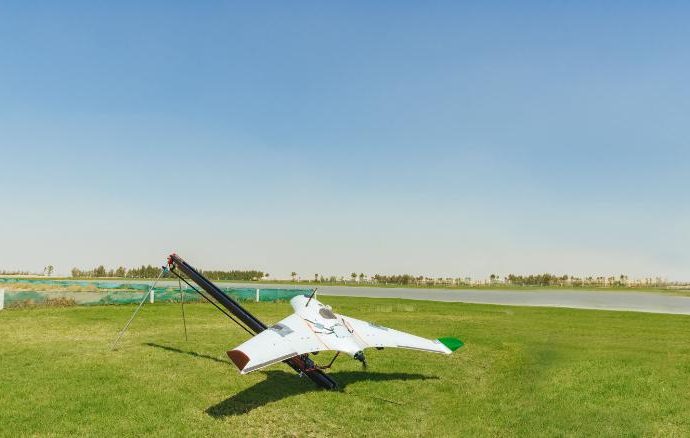With a harsh, desert climate and an average rainfall of just four inches (10 cm) a year, the United Arab Emirates (UAE) needs more freshwater. In search of a solution, it has been funding science projects from around the world to try to make it rain.
Source: CNN
One of these projects involves using catapults to launch small unmanned aircraft which zap clouds with an electric charge.
A team of scientists from the University of Reading, in the UK, initially proposed the idea in 2017. Now, the custom-built drones will soon begin tests near Dubai.
The idea is that charging droplets in clouds will make them more likely to fall as rain.
“There’s been a lot of speculation about what charge might do to cloud droplets, but there’s been very little practical and detailed investigation,” says Keri Nicoll, one of the core investigators on the project. The aim is to determine if the technology can increase rainfall rates in water-stressed regions.
Nicoll’s team started by modelling the behavior of clouds. They found that when cloud droplets have a positive or negative electrical charge, the smaller droplets are more likely to merge and grow to become big raindrops.
The size of the raindrops is important, says Nicoll, because in places like the UAE which has high clouds and high temperatures, droplets often evaporate as they fall.
“What we are trying to do is to make the droplets inside the clouds big enough so that when they fall out of the cloud, they survive down to the surface,” says Nicoll.
The proposal was chosen to receive a $1.5 million grant distributed over three years by the UAE Research Program for Rain Enhancement Science, an initiative run by the National Center of Meteorology.
To test out the model, Nicoll and her team built four aircraft with a wingspan of two meters. These are launched from a catapult, have a full autopilot system, and can fly for around 40 minutes.
Each aircraft has sensors for measuring temperature, charge, and humidity, as well as charge emitters — the part that does the zapping — that were developed with the University of Bath in the UK.

So far, testing has been conducted in the UK and Finland, and ground-based measurements of cloud properties taken in the UAE. The research has been published in the Journal of Atmospheric and Oceanic Technology.
Because the pandemic meant Nicoll’s team couldn’t travel to the UAE, they have trained operators from a flight school in Dubai to use their aircraft. They’re now waiting for the right weather conditions to complete the tests.
Cloud seeding
As climate change alters weather patterns, causing severe droughts in some places and floods in others, there is a growing interest in how to control the weather. According to the World Wildlife Fund, two thirds of the world’s population may face water shortages by 2025.
While the University of Reading project is coming to an end this year, Nicoll wants future projects to combine charging clouds with cloud seeding — an existing weather modification technique where drones inject particles of silver iodide or salt into clouds to encourage them to rain or snow.
Nicoll says using charged salt particles could make cloud seeding more efficient.
Alya Al Mazroui, director of the UAE Research Program for Rain Enhancement Science, says the organization is already experimenting with cloud seeding. “An increasing number of countries have invested in weather modification research and applications, particularly those in arid regions such as the UAE,” she says.
The UAE conducted 242 cloud seeding missions in 2017, according to the National Center of Meteorology. In 2018, Al Mazroui told CNN that rain enhancement could offer a more cost-effective and environmentally friendly solution to water security than alternatives like desalination, where salt is removed from seawater. The UAE has one of the largest desalination operations in the world, with huge quantities of brine produced as a byproduct. But discharging brine into the sea can harm marine life.
Other countries that have heavily invested in cloud seeding include the US and China. The latter announced last December that it would expand its weather modification program to cover an area of over 5.5 million square kilometers.
While cloud seeding as a concept has been around for decades, there has been little research showing its effectiveness. One study funded by the US National Science Foundation in early 2020 found that seeding with silver iodide could increase snowfall.
But there are questions over whether seeding clouds in one location might take rain away from another location, and the long-term environmental impacts of silver iodide. The process is also very expensive.
“There’s still a long way to go to definitively see how effective cloud seeding weather modification is at enhancing rainfall,” says Nicoll.
But we may soon be one step closer to finding out how effective cloud zapping can be.
Source: CNN

































Leave a Comment
You must be logged in to post a comment.